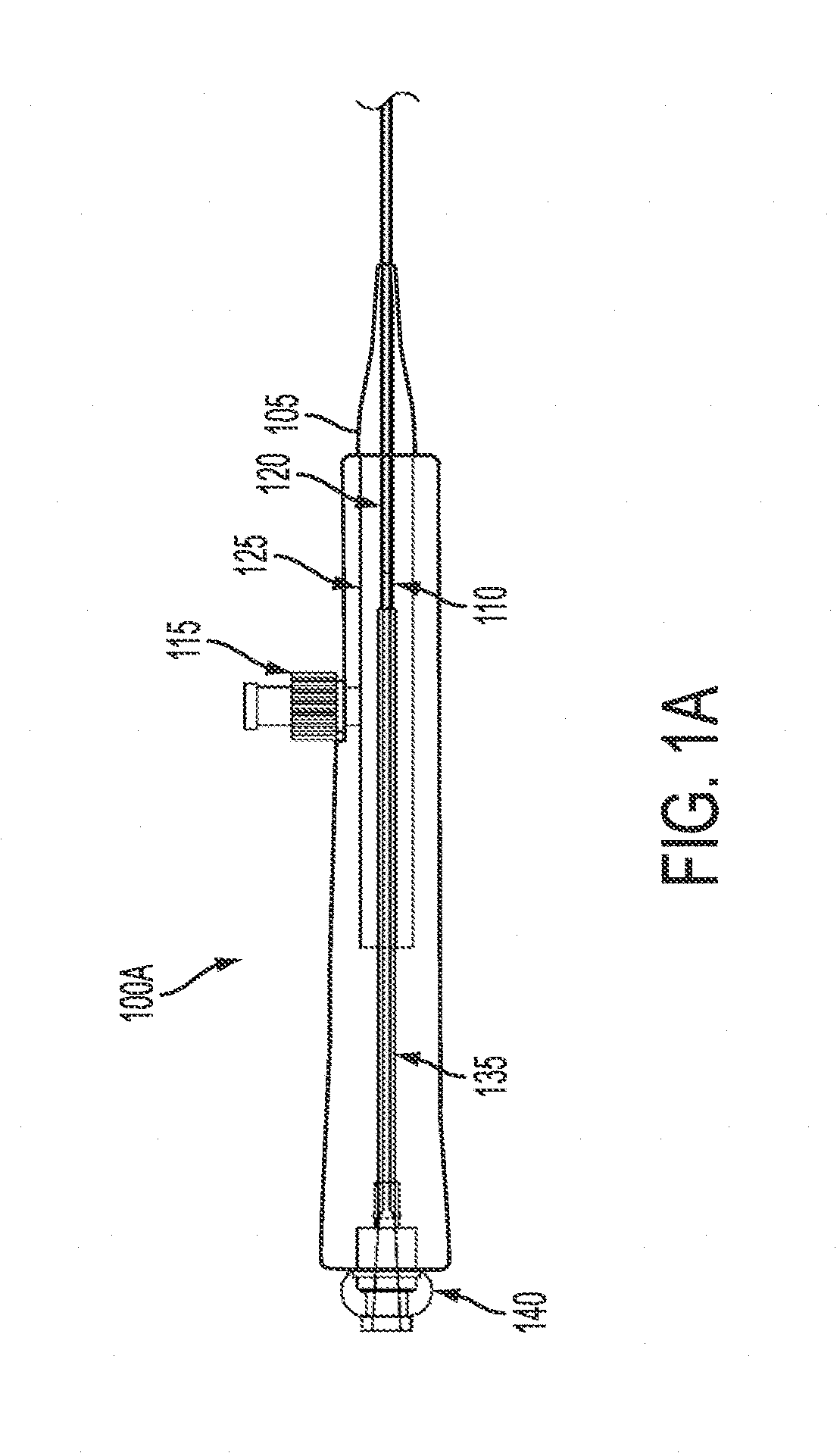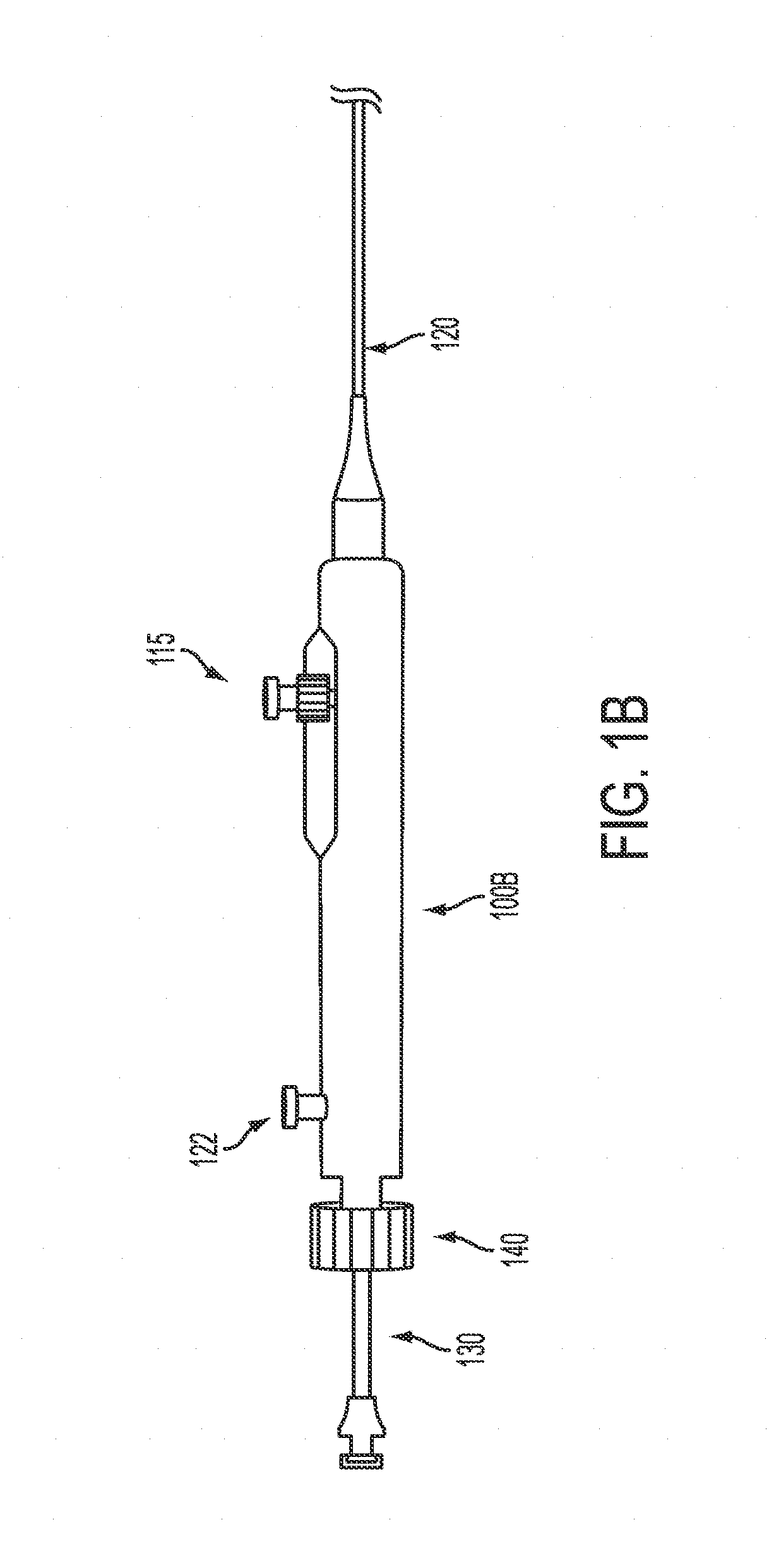Method and apparatus for centering a microcatheter within a vasculature
a micro-catheter and vasculature technology, applied in the field of vasculature apparatus and methods, can solve the problems of procedural failure, major obstacle within a chronic total occlusion, and several drawbacks of percutaneous treatment procedures
- Summary
- Abstract
- Description
- Claims
- Application Information
AI Technical Summary
Benefits of technology
Problems solved by technology
Method used
Image
Examples
Embodiment Construction
[0058]Embodiments of the present invention may include an apparatus and methods for advancing one or more catheters, preferably, microcatheters through chronic total occlusions in the vasculature. The support and centering functionality has application beyond CTOs, even though the preferred embodiments described herein are directed to support and centering to facilitate a guidewire to cross through a CTO.
[0059]Embodiments of the present invention may incorporate several features to successfully center a microcatheter in a chronic occlusion. Features of the present invention may include a catheter apparatus comprising an outer shaft having a lumen, an inner shaft having a lumen, a microcatheter having a lumen, one or more guidewires for passing through the lumen of the microcatheter and a scaffold structure whereby the scaffold structure is attached to the inner shaft, and whereby the inner shaft and microcatheter telescope independently of each other. The scaffold is configured to b...
PUM
 Login to View More
Login to View More Abstract
Description
Claims
Application Information
 Login to View More
Login to View More - R&D
- Intellectual Property
- Life Sciences
- Materials
- Tech Scout
- Unparalleled Data Quality
- Higher Quality Content
- 60% Fewer Hallucinations
Browse by: Latest US Patents, China's latest patents, Technical Efficacy Thesaurus, Application Domain, Technology Topic, Popular Technical Reports.
© 2025 PatSnap. All rights reserved.Legal|Privacy policy|Modern Slavery Act Transparency Statement|Sitemap|About US| Contact US: help@patsnap.com



